
Alexander Emmanuel Rodolphe Agassiz, son of Louis Agassiz and stepson of Elizabeth Cabot Agassiz, was an American scientist and engineer.

Jean Louis Rodolphe Agassiz FRS (For) FRSE was a Swiss-born American biologist and geologist who is recognized as a scholar of Earth's natural history.
The Percopsiformes are a small order of ray-finned fishes, comprising the trout-perch and its allies. It contains just ten extant species, grouped into seven genera and three families. Five of these genera are monotypic
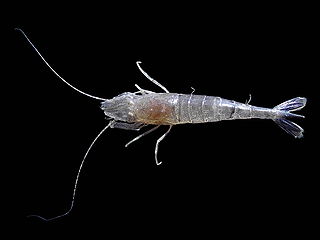
Crangonidae is a family of shrimp, of the superfamily Crangonoidea, including the commercially important species Crangon crangon. Its type genus is Crangon. Crangonid shrimps' first pair of pereiopods have partially chelate claws that they use to capture their prey. They burrow shallowly into sediment on the sea floor, and feed on bivalves, crustaceans, polychaetes, and some small fish.

Palaeoniscum is an extinct genus of ray-finned fish from the Permian period (Guadalupian-Lopingian) of Europe, North America (Greenland), and possibly other regions. The genus was named Palaeoniscum in 1818 by Henri Marie Ducrotay de Blainville, but was later misspelled as Palaeoniscus by Blainville and other authors. Palaeoniscum belongs to the family Palaeoniscidae.

Cidaris is a genus of pencil sea urchins.

Myliobatis is a genus of eagle rays in the family Myliobatidae.
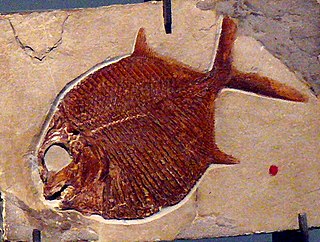
Pycnodontiformes is an extinct order of primarily marine bony fish. The group first appeared during the Late Triassic and disappeared during the Eocene. The group has been found in rock formations in Africa, Asia, Europe, North and South America. They were small to middle-sized fish, generally with laterally-compressed deep bodies, some with almost circular outlines, adapted for manuverability in reef-like environments. The group was morphologically diverse containing forms such the very short but deep Gebrayelichthyidae and the horned Ichthyoceros, both from the early Late Cretaceous of Lebanon. Most, but not all members of the groups had jaws with round and flattened teeth, well adapted to crush food items (durophagy), such as echinoderms, crustaceans and molluscs. Some pyncodontiformes developed piranha like teeth used for eating flesh. Most species inhabited shallow marine reef environments, while a handful of species lived in freshwater or brackish conditions. While rare during the Triassic and Early-Middle Jurassic, Pycnodontiformes became abundant and diverse during the Late Jurassic, remaining diverse until a burst of diversification at the beginning of the Late Cretaceous, after which they began to gradually decline, with a more sudden decline at the end of the Cretaceous due to the collapse of reef ecosystems, finally becoming extinct during the Eocene.
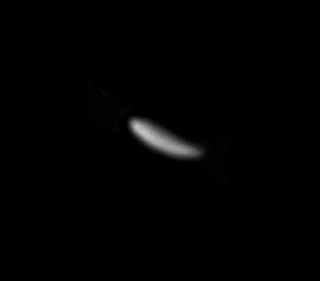
Aegaeon, or Saturn LIII, is a natural satellite of Saturn. It is thought to be similarly smooth as Methone. It orbits between Janus and Mimas within Saturn's G Ring.

Palaeoniscidae is an extinct family of ray-finned fishes (Actinopterygii) ascribed to the order Palaeonisciformes. The family includes the genus Palaeoniscum and potentially other Palaeozoic and Mesozoic early actinopterygian genera. The name is derived from the Ancient Greek words παλαιός and ὀνίσκος.
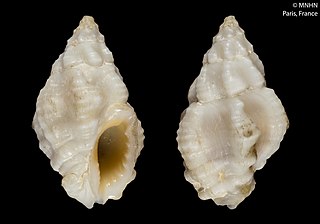
Pascula is a genus of sea snails, marine gastropod mollusks in the family Muricidae, the murex snails or rock snails.

Cidaridae is a family of sea urchins in the order Cidaroida.

Corynidae is a family of hydrozoans in the order Anthomedusae.

Psammechinus is a genus of sea urchins in the family Parechinidae containing two species:
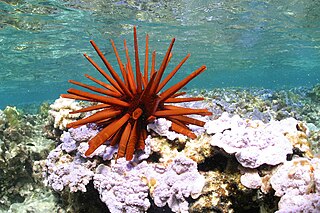
The Echinometridae are a family of sea urchins in the class Echinoidea.

Mulinia cleryana is a species of medium-sized saltwater clam, a marine bivalve mollusc in the family Mactridae. This species occurs in the Caribbean Sea and the western Atlantic Ocean as far south as Brazil.

Temnopleuridae is a family of sea urchins in the infraorder Temnopleuridea.

Goniocidaris is a genus of sea urchins (Echinoidea) in the family Cidaridae and typical of the subfamily Goniocidarinae. Extant species are mostly found in Indo-Pacific seas, often living at depth.
Brachonyx is a genus of beetles belonging to the family Curculionidae.
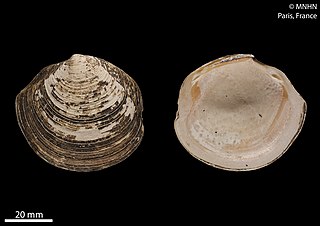
Phacoides is a genus of bivalves belonging to the family Lucinidae.















